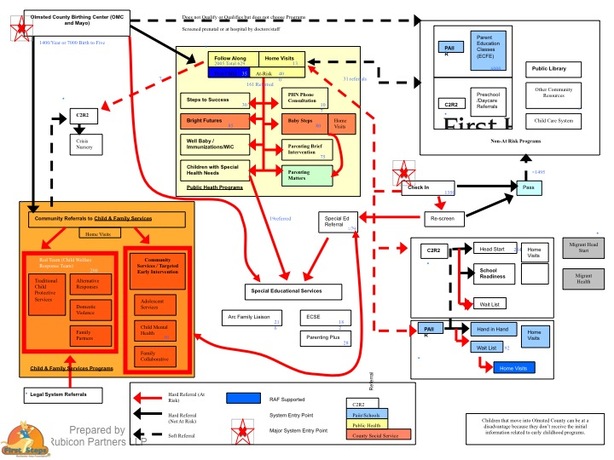
Why don’t we do this as a community?
Because the very way a community is organized pre-empts any kind of overview of what we are trying to accomplish. We work in our separate realms as good people doing good things. But lacking a larger focus, is it any surprise we don’t achieve the larger goals?
We simply don’t know how to work as a community body. Our community leaders and citizens don’t typically get together and aspire together. Even when we come together in collaborative groups, we come as representatives of our organizations, companies, and agencies.
We are, at our most basic, a collection of people living in the same place, all wanting a good life for ourselves, our families, and our neighbors. But we don’t think or do things at that basic level. We have so long operated from our own niche in the community—from our job, mostly—that we can only think through the prism of that niche. Finding a way to work as a community is what we mean by working differently.
What is a “community?” This is determined by the people who are working together, but it can refer to a neighborhood, a town or city, a county, or a region. The “community” is defined by wherever the solutions exist. If a problem can be solved at the neighborhood level, then that is where the community needs to work differently. If the problem requires multiple counties working together to solve it, then that is where the community needs to work differently. The community is wherever we can share an aspiration and achieve it.
Working differently as a community doesn’t mean reorganizing the systems we have created to address problems. Years of collaboration and efforts to rework how money flows and how services are provided have left most of us frustrated and more pessimistic than when we started.
[Rochester/Olmsted County, MN early childhood service system spaghetti – “Trying to reorganize existing systems has left most communities frustrated and pessimistic.”]
But when community members are clear about what they want and hold themselves accountable for achieving it, alignment of effort happens naturally. The systems reorganize themselves to achieve the goals.
Get Together
Aspire Together
Set Measurable Outcomes
Make Plans
Take Action
Evaluate Results
In 2003 we published a book called Community Visions, Community Solutions that laid out the concept of working differently at the community level. Our suggestions for what this work looks like and what it requires for success were based on research and a few community examples.
In the seven years since, we’ve shared this approach with communities throughout North America, and they have proven time and again that working differently, well, works.
To be tweeted links to my new posts -- blog, book reviews (both nonfiction and fiction), data or other recommended tools -- either go to Twitter.com and follow me @jcrubicon, or just go to my Home page and click on the Twitter button on the right, just above the tweet stream, and follow me @jcrubicon.



 RSS Feed
RSS Feed
